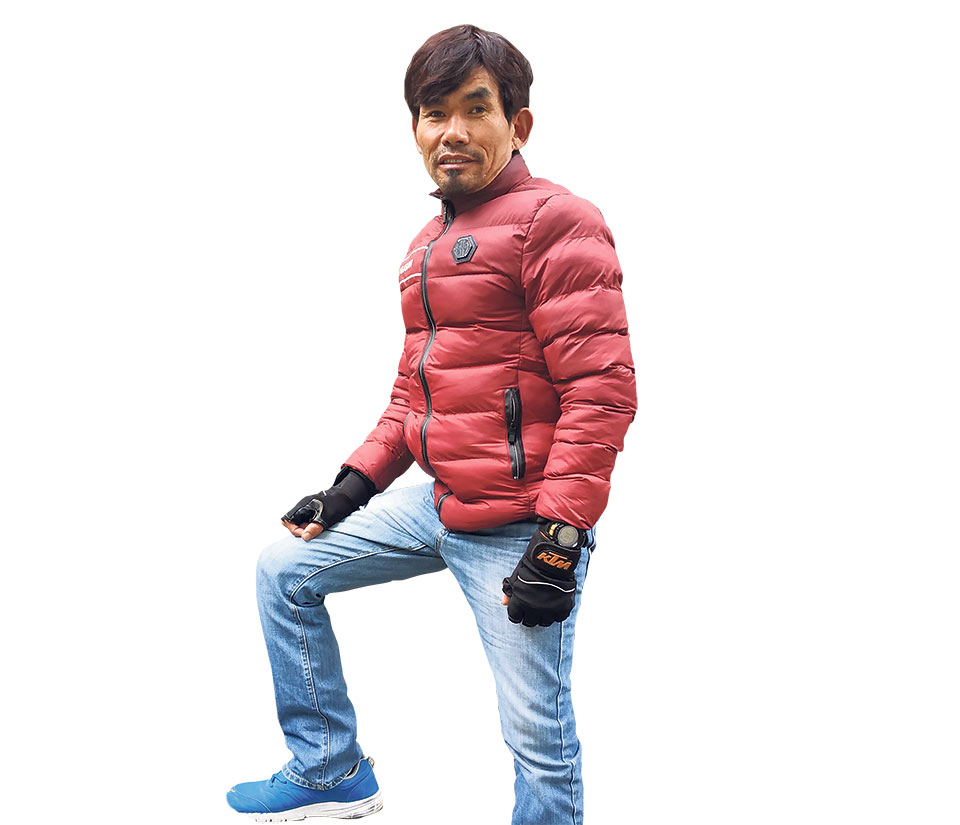Cham: The Dance Meditation (With Video)
5 years ago

5 years ago

5 years ago

5 years ago

5 years ago

5 years ago

Running away from home at 13, Riddie Ghale barely knew that the journey he embarked on would end up in the tourism industry. Originally from Dhading, he started initially worked as a porter for seven years before being certified as a trek guide.
Having received the license of a trek guide in 2006 from the Ministry of Agriculture, Tourism and Civil Aviation, he was also awarded the certificate of Mountain Leadership by Nepal Mountaineering Association in 2017. He also scaled the Mera and Island Peak that year. Ghale is currently working as a senior trek guide at Alliance Trek and Expedition Pvt Ltd, Chhetrapati.
In an interview with My City’s Sonam Lama, Ghale shared his two-decade experience in tourism as a trek guide.
How do you find the tourism scenario in Nepal after the 2015 earthquake?
I have witnessed many tourists visiting Nepal after the earthquake in order to witness the changes occurred after the calamity. With the campaign of Visit Nepal 2020 running, visitors are highly expected to visit the country. A few years ago, the Kanchanjunga basecamp had a record of up to 600 visitors a year. Meanwhile, the number has hiked to around 2200 in today’s scenario. There is a huge influx of tourists every season. I think we need proper maintenance and hospitality in order to further promote tourism to a larger extent.
What are the things to be considered before and during trekking?
Trekking is simply a recreation done with a free spirit and an open mind. The more you feel excited and confident about the journey, the more interesting trekking gets. It is important to get prepared with the needful accessories and comfortable clothing before you leave. Sufficient energy and water supply in your body is highly recommended. Before trekking, it is crucial that you hydrate your body with a minimum of 6-8litres of water as lack of water in the body can cause headache. Even if you feel hot and perspire, you are advised not to get rid of your clothing. All the necessary guidelines are provided when you embark on a journey. The most important thing is to abide by the guidelines provided.
What plans and policies should be adopted to foster tourism in Nepal?
In a long journey as a trek guide, I have found the trekking trails more or less in the same condition. Some of the routes and trails that need maintenance should be immediately done in order to enhance tourism. The amount of budget that is allocated for tourism should be properly invested. As trekking is all about walking, the use of vehicles on the trail should not be motivated. I have so far traversed many mountainous trails and have observed that Everest and Annapurna Base camps have adopted measures to ensure the sanitation of their respective areas. Sanitation management of such kinds should be sought in the Kanchanjunga Base camp area also.
As a person focused on treks, how tough is it to guide the tourists?
I find my work fun and comforting, though I have been trekking for over two decades now. However, there is always a sense of responsibility that I feel when I start with every journey. Going on a trekking implies that you need to be physically and mentally prepared for uncertainties that you may come across during the journey. Some visitors are prone to altitude sickness, headache and vomiting while trekking above 3000m. These health conditions need to be cured with the right method and medication. In a group of tourists there are a variety of trekkers that you need to take into consideration. In case of communication gap or when clients seem barely satisfied of the services provided, the guide shall hold the responsibility.
Are there any other trekking routes that you think should be promoted?
Almost all of the trails have so far been acknowledged. Meanwhile, I think the Ruby Valley trek in Dhading is one of the latest routes that we are trying to promote. The trek initiates from Rasuwa and ends in Gorkha in about 17 days. The significance of this route is high as the trek is comparatively affordable. The trekkers can explore remote areas and behold the natural beauty of Ganesh, Manaslu and Annapurna mountains.
Leave A Comment